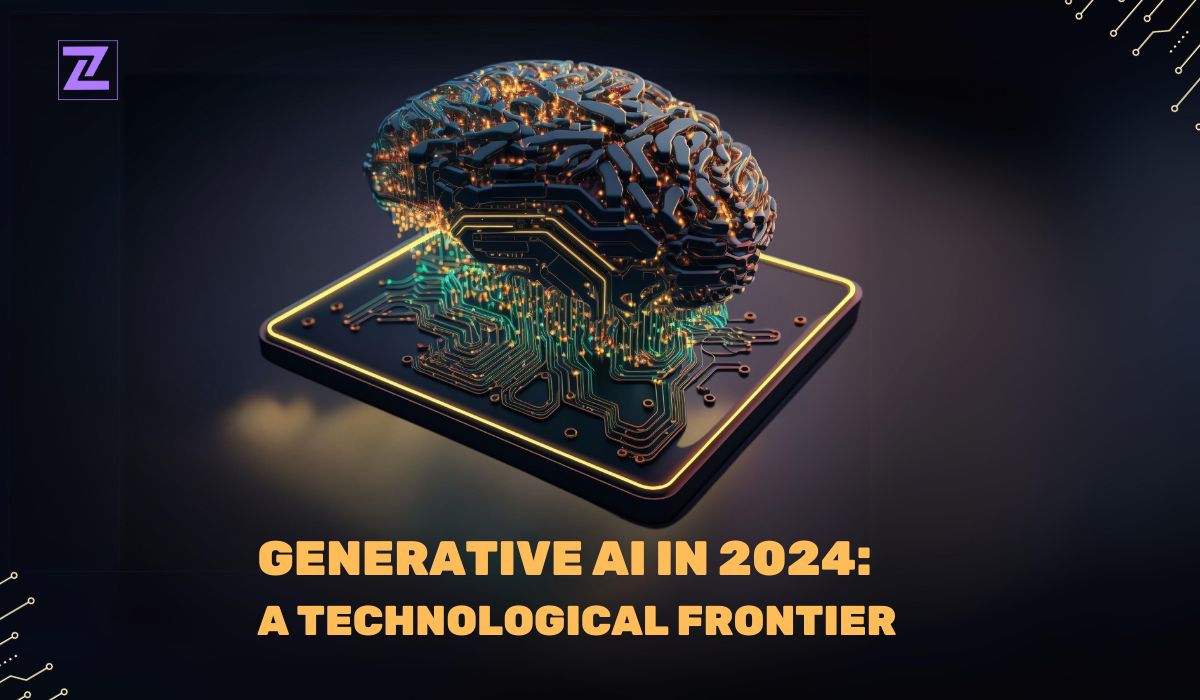
As we step into the year 2024, the era of Generative Artificial Intelligence (Generative AI) continues to evolve, presenting a spectrum of opportunities, challenges, and far-reaching implications. Let's aims to provide a comprehensive exploration of the current state of Generative AI, the opportunities it offers, the potential risks, and the broader implications shaping the technological landscape.
Generative AI refers to a class of artificial intelligence systems designed to generate new content, be it in the form of text, images, audio, or even video. It utilizes deep learning models, particularly Generative Adversarial Networks (GANs) and Large Language Models (LLMs) like ChatGPT, to understand and recreate patterns from vast datasets. Over the years, Generative AI has witnessed remarkable advancements, making waves across various industries and transforming the way we interact with technology.
Generative AI has become a formidable tool for content creators. It can assist in generating high-quality text, images, and even videos, streamlining the creative process and enhancing the quality of the output.
Businesses can leverage Generative AI to create personalized user experiences. From tailor-made content recommendations to individualized product suggestions, Generative AI is revolutionizing the way businesses interact with their customers.
The integration of Generative AI with multimodal capabilities, combining text, images, and audio, opens up new possibilities for creating immersive and engaging content. This integration is paving the way for more interactive and personalized user experiences.
Generative AI is making significant strides in healthcare, aiding in medical imaging analysis, drug discovery, and even generating synthetic data for training medical models. These advancements are revolutionizing healthcare practices and improving patient outcomes.
Large Language Models (LLMs) have demonstrated remarkable progress in understanding and generating human-like text. This progress is enabling more natural interactions in chatbots, virtual assistants, and automated content generation, making technology more accessible and user-friendly.
The generation of deepfake content and the potential misuse of Generative AI raise ethical concerns. Addressing issues related to misinformation, privacy, and malicious use is paramount to ensure the responsible use of this technology.
Generative AI models can inherit biases present in the training data, leading to biased outputs. Ensuring fairness and mitigating biases in AI-generated content remain ongoing challenges that need to be addressed.
Excessive reliance on AI-generated content without human oversight can lead to the spread of misinformation and a lack of accountability for the generated material. It’s crucial to strike a balance between automation and human intervention.
As Generative AI becomes more sophisticated, there is an increased risk of it being exploited for cyber threats, including the creation of convincing phishing emails or deepfake videos for malicious purposes. Robust security measures are needed to safeguard against these threats.
The rapid evolution of Generative AI outpaces regulatory frameworks, posing challenges in establishing guidelines for responsible use and addressing legal implications. Policymakers and industry leaders need to collaborate to keep up with the pace of technological advancements.
The advancement of Generative AI contributes to the development of more autonomous systems, ranging from self-driving cars to AI-powered robotic assistants. These developments are reshaping our daily lives and the way we interact with technology.
Generative AI fosters new models of collaboration between humans and machines. It augments human capabilities in creativity, problem-solving, and decision-making, leading to more efficient and innovative solutions.
Industries such as marketing, entertainment, healthcare, and education are witnessing transformative changes as Generative AI introduces innovative solutions and streamlines processes. The impact of Generative AI is far-reaching, disrupting traditional practices and paving the way for a new era of technological innovation.
The rise of Generative AI underscores the need for robust AI ethics frameworks and governance structures. Stakeholders, including policymakers, industry leaders, and the public, must collaborate to establish responsible practices and standards, ensuring the ethical and beneficial use of AI.
As we continue to navigate the landscape of Generative AI in 2024, it’s clear that this technology holds immense potential. However, it’s equally important to address the associated risks and challenges to harness its benefits responsibly and ethically. The future of Generative AI is indeed promising, and it’s up to us to shape it in a way that benefits all.